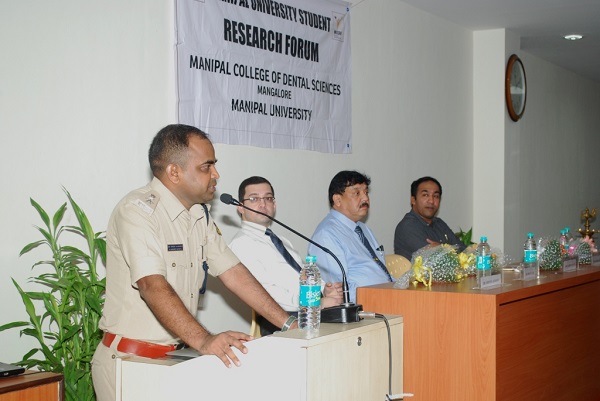Dr. Dilip G. Naik, Dean Manipal College of Dental Sciences, Mangalore, presided over the function. He commended the work done by the staff mentors of the research forum Dr. Ravikiran, Dr. Swati and Dr. Joanna and congratulated the students for their enthusiasm for participating in research activities, particularly this workshop. He said, Manipal Academy of Higher Education has always been at the forefront in encouraging student research.
Sana Chawla, Secretary of MUSRF proposed the vote of thanks. She appreciated the efforts of her colleagues Hussain Lokhandwala, Vice president and Ms. Sanjana, treasurer of MUSRF.
The inaugural function was followed by an interesting lecture by Dr. Ashith B. Acharya, where he discussed several cases to explain Age Estimation, tooth identification, sex prediction and identification of bite marks. Following this, hands on workshop was conducted, where the students had an opportunity to practice digital methods of age estimation and bite mark identification.








